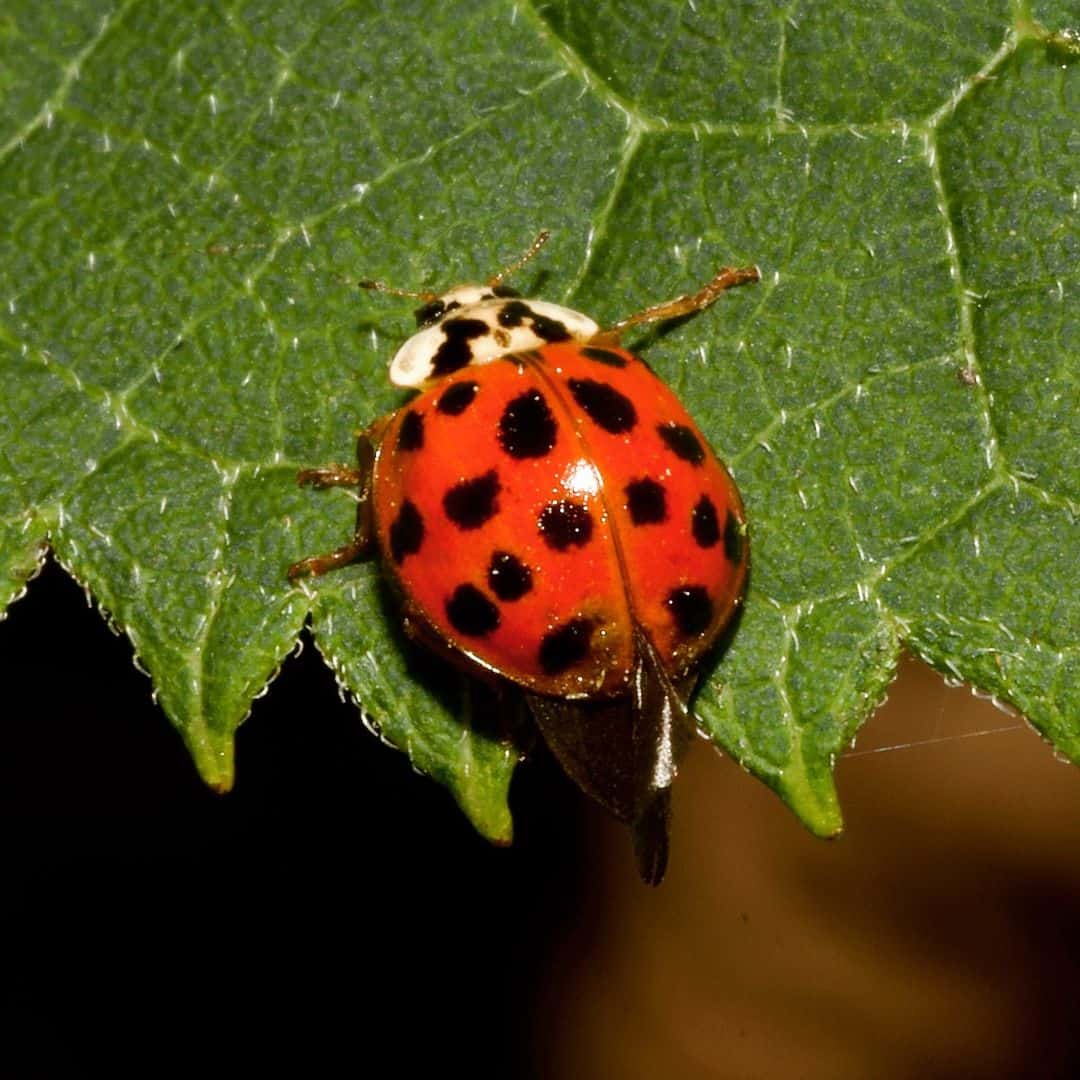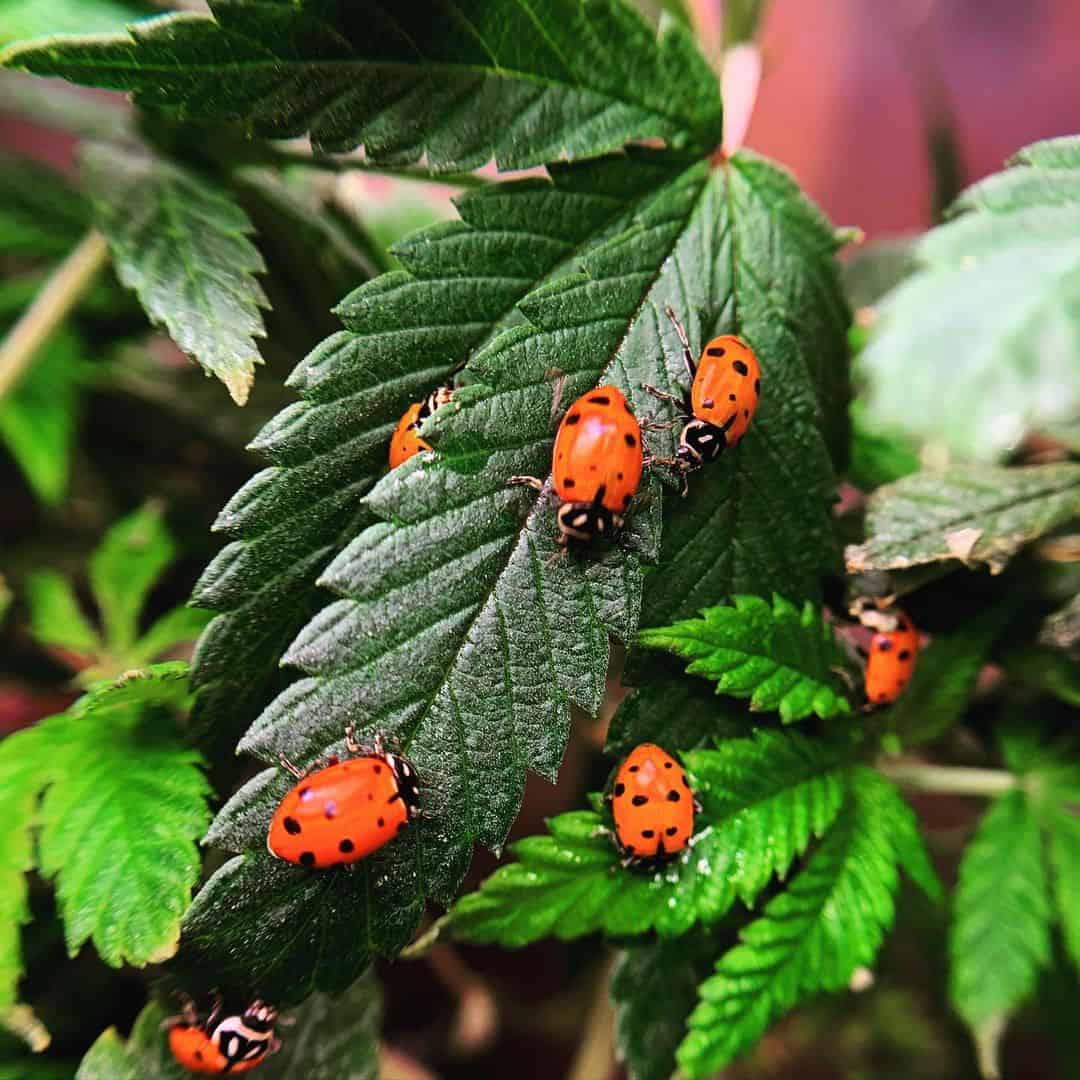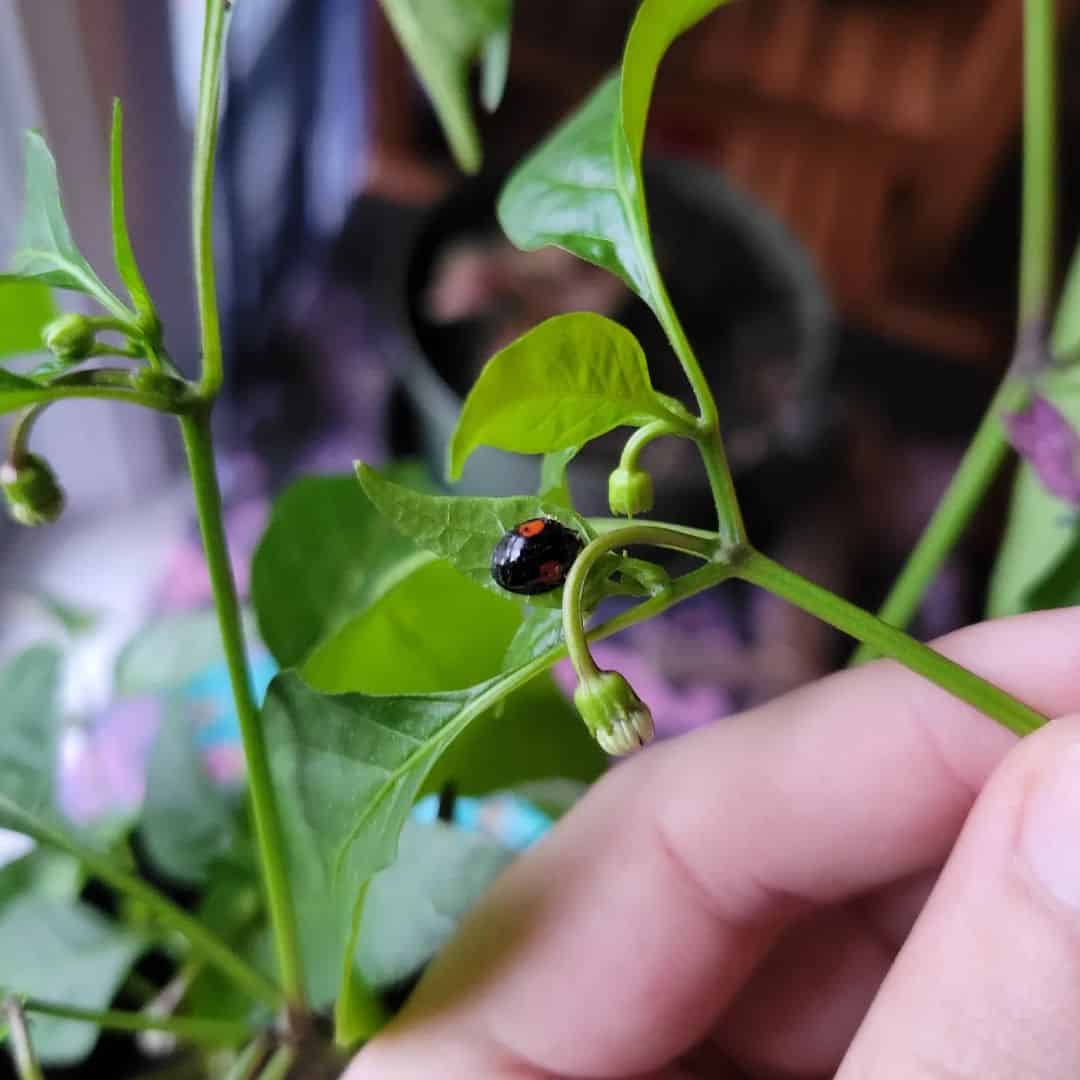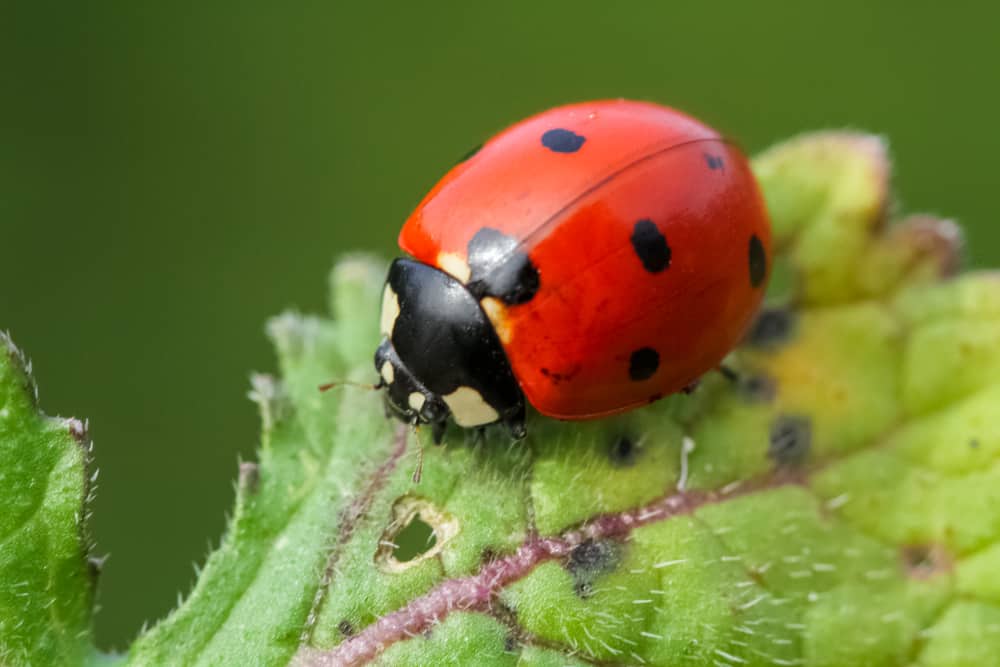It’s quite difficult for ladybugs to just stay put in your garden, as they are always on the lookout for food sources (pollen and nectar).
There are over 5,000 different species of ladybugs worldwide, so ideally, you should have no trouble getting them into your garden.
But, getting them to stay put is where the problem lies.
Ladybugs are essential in any home garden and that’s because they feed on pests that cause havoc on flowers and plants.
If you are unsure of how to attract a large number of ladybugs, keep reading.
Tips for Attracting Ladybugs to Your Garden
Yes, it’s easy to make an online purchase of ladybugs in the exact amount you want, but why bother when you can get it for free?
There are quick ways to attract ladybugs to your space without spending a lot of money.
1. Get their Food
Ladybugs eat garden pests and pollen, and if these two alternatives are available in your garden, you’ll definitely see them there. Ladybugs don’t survive on empty stomachs as expected, so when there’s a surplus of pollen and pests, they’ll relocate to your garden and stay!
The trick is not in attracting them, but in getting them not to move away from your garden. As long as these two options are in abundance, they’ll never leave.
Ladybugs are not attracted to all types of flowers, just in case you are wondering why you don’t see them around your garden even when it’s full of flowers. They are mostly attracted to plants that have flat flowers such as; Marigolds, Sweet Alyssum, Feverfew, Yarrow, Cosmos, Parsley, Dill, Calendula, Caraway, Coreopsis, Cilantro, Scented Geranium, Tansy, Angelica, Fennel, etc.
Also, certain insects propel ladybugs to camp in your garden, and “aphids” is one of them. You might think it’ll cause more harm, but look on the bright side – you won’t need insecticides, plus you’ll have tons of ladybugs in your garden. Unlike other pests, ladybugs don’t pose any threat to your garden, and you have no reason to get rid of them.
They feed on insect pests like leaf hoppers, mites, and bugs.
2. Add a Water Source
Ladybugs love water, and they’ll come to your garden if they are sure there’s water. You don’t need to do much to create the perfect water source; a damp towel is enough to do the trick.
By nature, ladybugs don’t stay in a place; once they sense there’s already a shortage of food or water, they’ll look for the next option that can offer them these two things in surplus.
So, to get them to stay, fill a small bowl with water and strategically place it around your garden. As a precautionary move, put small stones into the water, so the ladybugs don’t drown when they are taking a sip.
Alternatively, you can spray your plant foliage, as they can equally drink from there as well.

3. Provide a Comfortable Shelter
Nobody likes staying in an uncomfortable home, and not ladybugs either. Ladybugs love protective hideouts that’ll shed them away from their predators such as toads and birds, so if you can grow groundcover plants like oregano and thyme, be sure to find ladybugs in your garden. Also, you can make a simple apartment for them by putting together a reasonable amount of pinecones in a mesh bag, and placing it in a sunny spot away from wind and air. Try as much as you can position it really high, so they’ll feel protected against birds
Mulch and leaves are perfect alternatives as well, and are good enough to entice ladybugs to pitch their tents in your garden.
If you are feeling up to it, you can make them a proper house, and you won’t even spend much doing so.
The best part is that you can build the shelter yourself as a DIY project with your kids. To make a nice shelter, get quality wood, and make a wooden box with holes. Ensure that you put sugar water, so ladybugs can be attracted to it.
And on the bright side, the house might attract other beneficial insects like bees.
4. Plant Aphids Decoy Plants
Allowing aphids to dwell in your garden while you wait for ladybugs to come and feast on them may sound counterproductive, and not everyone will like that.
Of course, aphids are dangerous pests and can ruin your plants, but if you exercise a bit of patience, you’ll notice they’ll attract ladybugs soon enough.
However, if you do not have the patience or you don’t like the idea, you can plant decoy plants for aphids instead.
You can plant decoy plants in your garden, but create a little distance between your other plants, so you don’t infest your entire garden. Some decoy plants you can use to attract aphids include early cabbages and marigolds. This way you’ll be inviting ladybugs into your garden, but not at the expense of your main plants.
All you need to do is make sure that there’s sufficient water, food, and proper shelter to make them stay longer.

5. Don’t Use Pesticides
Yes, you need pesticides to eliminate harmful pests, but do you know you risk killing the ladybugs in your garden as well?
Pesticides are out of it if you intend to lure ladybugs into your garden, and that’s because it doesn’t discriminate between good and bad pests. Using low-toxic chemicals will also harm your ladybugs and cause them to stay away from your space.
It can be a bit terrifying when you spot aphids in your garden but be patient and it’ll pay off soon.
Ladybugs are always hungry and in search of where they can get food, so, the best thing you can do is allow ladybugs to get rid of the pests for you.
Fun fact; ladybugs can eat as many as 5,000 aphids in their lifetime.
How to Keep Ladybugs In Your Garden
Attracting ladybugs isn’t the only challenge you’ll have; the main task lies in getting them to stay. After all, what use are they if they don’t make your garden their habitat?
Instead of going through the hassles of attracting ladybugs, you can simply purchase them. But how do you then get them not to leave after releasing them into the garden?
1. Enough Food
The same way you attract ladybugs is the same way you get them to stay. Whatever food you are setting up for them, make sure it’s in surplus, that way they won’t even want to leave at all.
Be sure their shelter is perfect as well because they’ll need a place to hibernate from time to time. So, if your garden seems like a good place to rest and lay eggs, they’ll stay.
2. Release Them At the Right Time
Buying ladybugs isn’t enough, you must know when to release them as well.
Before releasing ladybugs into the garden, keep them in a fridge for seven hours, as this will slow down their speed, but not enough to kill them.
Releasing ladybugs during the day is a bad move, as they’ll all just fly off and you’d be left with nothing. The best time to let them into your garden is during twilight hours.
When releasing them, be sure it’s within proximity to water and food, so they don’t have to wander off too much before finding what to eat.
You can release them close to aphid-infested plants, as that’s one of their favorite meals.

Are All Ladybugs Beneficial?
You’d be surprised to know that not all ladybugs eat pests, some eat up your plants as well. And not knowing the difference between pest ladybugs and beneficial ladybugs will cost you a lot in the long run.
Ladybugs come in different species, and the most popular and beneficial one is the Hippodamia Convergens which is native to North America, and it’s very helpful in getting rid of aphids in your garden.
There’s also the Coccinella Septempunctata, which is a native of Eurasia. It’s best known for feeding on scale insects and aphids, so you can purchase it as well. Make sure you are specific in your order, so you don’t receive a harmful type of ladybug.
The Coleomegilla Maculata is also a beneficial type of ladybug and it’s native to North America. Its oval shape and pink-spotted appearance make it unique, so you’ll have no issue spotting it.
However, the one type of ladybug you need to be wary of is the Mexican bean beetle. It’s one of the few destructive species of the beneficial family of insects, and that’s because it feeds on plants rather than other insects.
Conclusion
The average gardener will definitely be pleased to find a handful of ladybugs in their garden because it means less money on pest control.
Ladybugs aren’t hard to attract when you know the right steps to take. As with any other insect, they thrive where there’s food, water, and shelter. So, if you can provide these three factors, then rest assured to have an influx of ladybugs in your garden in no time.
